Creating a Software Development Budget (With Examples)
Last updated: June 19, 2024 Read in fullscreen view
- 07 Jul 2024
 Top Fintech Companies in Vietnam Driving Innovation Across Digital Banking & Investment 29/54
Top Fintech Companies in Vietnam Driving Innovation Across Digital Banking & Investment 29/54 - 18 Oct 2020
 How to use the "Knowns" and "Unknowns" technique to manage assumptions 21/992
How to use the "Knowns" and "Unknowns" technique to manage assumptions 21/992 - 01 Oct 2020
 Fail fast, learn faster with Agile methodology 13/975
Fail fast, learn faster with Agile methodology 13/975 - 15 Oct 2022
 Project-based team model for one-off and pilot software development projects 11/733
Project-based team model for one-off and pilot software development projects 11/733 - 24 Nov 2025
 Top Blockchain Companies in Vietnam 11/29
Top Blockchain Companies in Vietnam 11/29 - 05 Aug 2025
 Why Doesn’t South Korea Outsource Its IT Projects Like Other Developed Countries? 10/83
Why Doesn’t South Korea Outsource Its IT Projects Like Other Developed Countries? 10/83 - 12 Oct 2022
 14 Common Reasons Software Projects Fail (And How To Avoid Them) 10/505
14 Common Reasons Software Projects Fail (And How To Avoid Them) 10/505 - 03 Oct 2020
 Outsourcing Your MVP Development - Streamlined Solutions for future 9/403
Outsourcing Your MVP Development - Streamlined Solutions for future 9/403 - 19 Oct 2021
 Is gold plating good or bad in project management? 8/756
Is gold plating good or bad in project management? 8/756 - 10 Nov 2022
 Poor Code Indicators and How to Improve Your Code? 8/214
Poor Code Indicators and How to Improve Your Code? 8/214 - 21 Aug 2025
 Top 30 Oldest IT Outsourcing Companies in Vietnam 8/91
Top 30 Oldest IT Outsourcing Companies in Vietnam 8/91 - 31 Oct 2025
 The True ROI of Software Development Outsourcing for Tech Startups 7/59
The True ROI of Software Development Outsourcing for Tech Startups 7/59 - 25 Sep 2025
 A Practical Guide to Secure Online Work for Outsourced Teams 6/58
A Practical Guide to Secure Online Work for Outsourced Teams 6/58 - 01 Mar 2023
 Bug Prioritization - What are the 5 levels of priority? 6/207
Bug Prioritization - What are the 5 levels of priority? 6/207 - 22 Mar 2022
 8 Mistakes Marketing Agencies or Consulting Firms Make When Outsourcing Web Development 6/324
8 Mistakes Marketing Agencies or Consulting Firms Make When Outsourcing Web Development 6/324 - 10 May 2021
 Project Audit and Second Opinion Services 6/237
Project Audit and Second Opinion Services 6/237 - 28 Jul 2022
 POC, Prototypes, Pilots and MVP: What Are the Differences? 6/612
POC, Prototypes, Pilots and MVP: What Are the Differences? 6/612 - 06 Feb 2021
 Why fail fast and learn fast? 6/376
Why fail fast and learn fast? 6/376 - 24 Nov 2021
 What is the Actual Cost of Hiring Cheap Developers? 6/348
What is the Actual Cost of Hiring Cheap Developers? 6/348 - 13 Oct 2021
 Outsourcing Software Development: MVP, Proof of Concept (POC) and Prototyping. Which is better? 6/426
Outsourcing Software Development: MVP, Proof of Concept (POC) and Prototyping. Which is better? 6/426 - 05 Mar 2021
 How do you minimize risks when you outsource software development? 5/318
How do you minimize risks when you outsource software development? 5/318 - 12 May 2021
 The Real Cost Between Outsourcing IT vs In-House: A Quick Comparison 5/403
The Real Cost Between Outsourcing IT vs In-House: A Quick Comparison 5/403 - 05 Jan 2022
 What Outsourcing Engagement Model is Right For You? 5/290
What Outsourcing Engagement Model is Right For You? 5/290 - 11 Mar 2023
 Common Pain Points in Software Development Outsourcing 5/228
Common Pain Points in Software Development Outsourcing 5/228 - 31 Aug 2022
 What are the best practices for software contract negotiations? 5/215
What are the best practices for software contract negotiations? 5/215 - 07 Oct 2025
 Case Study: Using the “Messaging House” Framework to Build a Digital Transformation Roadmap 5/53
Case Study: Using the “Messaging House” Framework to Build a Digital Transformation Roadmap 5/53 - 07 Nov 2024
 Outsourcing Crisis Looming: Will Trump's Policies Transform the Global IT Landscape? 4/160
Outsourcing Crisis Looming: Will Trump's Policies Transform the Global IT Landscape? 4/160 - 01 Jan 2024
 12 reasons for software development outsourcing 4/147
12 reasons for software development outsourcing 4/147 - 18 Aug 2022
 What are the consequences of poor requirements with software development projects? 4/243
What are the consequences of poor requirements with software development projects? 4/243 - 12 Dec 2021
 Zero Sum Games Agile vs. Waterfall Project Management Methods 4/376
Zero Sum Games Agile vs. Waterfall Project Management Methods 4/376 - 14 Dec 2021
 The Top 10 Problems with Outsourcing Implementation and How to Solve Them 4/376
The Top 10 Problems with Outsourcing Implementation and How to Solve Them 4/376 - 02 May 2021
 Outsourcing Software Development: Avoid 8 Mistakes 4/89
Outsourcing Software Development: Avoid 8 Mistakes 4/89 - 04 Oct 2022
 Which ERP implementation strategy is right for your business? 4/278
Which ERP implementation strategy is right for your business? 4/278 - 09 Jan 2021
 How can outsourcing enable business agility? 4/181
How can outsourcing enable business agility? 4/181 - 14 Oct 2021
 Advantages and Disadvantages of Time and Material Contract (T&M) 4/794
Advantages and Disadvantages of Time and Material Contract (T&M) 4/794 - 21 Oct 2021
 Advantages and Disadvantages of IT Outsourcing 3/321
Advantages and Disadvantages of IT Outsourcing 3/321 - 18 Jul 2021
 How To Ramp Up An Offshore Software Development Team Quickly 3/518
How To Ramp Up An Offshore Software Development Team Quickly 3/518 - 19 Mar 2021
 Selective Outsourcing of IT Functions - a new trend in business outsourcing 3/496
Selective Outsourcing of IT Functions - a new trend in business outsourcing 3/496 - 08 Oct 2022
 KPI - The New Leadership 3/557
KPI - The New Leadership 3/557 - 31 Oct 2021
 Tips to Fail Fast With Outsourcing 3/376
Tips to Fail Fast With Outsourcing 3/376 - 12 Jan 2023
 Top 10 Trustworthy IT Outsourcing Companies in Vietnam 3/262
Top 10 Trustworthy IT Outsourcing Companies in Vietnam 3/262 - 01 Jan 2023
 Why is Vietnam the Top IT Outsourcing Destination of 2023? 3/204
Why is Vietnam the Top IT Outsourcing Destination of 2023? 3/204 - 01 Jan 2023
 4 New IT Outsourcing Pricing Models to consider in 2023 3/323
4 New IT Outsourcing Pricing Models to consider in 2023 3/323 - 16 Dec 2021
 Why outsource Python development of your project? 3/445
Why outsource Python development of your project? 3/445 - 01 Dec 2023
 Laws of Project Management 3/250
Laws of Project Management 3/250 - 01 Jan 2024
 Software Outsourcing Questions for 2024 3/145
Software Outsourcing Questions for 2024 3/145 - 01 Jan 2024
 Tech Partnerships: Choosing the Right Software Outsourcing Firm in Vietnam 3/166
Tech Partnerships: Choosing the Right Software Outsourcing Firm in Vietnam 3/166 - 08 Oct 2024
 Vietnam: The Rising Star in Global Outsourcing – Trends and Costs for 2025 3/295
Vietnam: The Rising Star in Global Outsourcing – Trends and Costs for 2025 3/295 - 14 Feb 2024
 Systems Engineering Tools in Requirements Development 3/265
Systems Engineering Tools in Requirements Development 3/265 - 05 Sep 2023
 The Cold Start Problem: How to Start and Scale Network Effects 3/167
The Cold Start Problem: How to Start and Scale Network Effects 3/167 - 01 Jan 2024
 Hiring Tech Talents in Asia: An Overview of Skills, Costs, and Potential 2/149
Hiring Tech Talents in Asia: An Overview of Skills, Costs, and Potential 2/149 - 01 May 2024
 Warren Buffett’s Golden Rule for Digital Transformation: Avoiding Tech Overload 2/188
Warren Buffett’s Golden Rule for Digital Transformation: Avoiding Tech Overload 2/188 - 03 Nov 2021
 7 phases of Odoo Implementation and Development: Can they be outsourced? 2/357
7 phases of Odoo Implementation and Development: Can they be outsourced? 2/357 - 10 Dec 2023
 Pain points of User Acceptance Testing (UAT) 2/417
Pain points of User Acceptance Testing (UAT) 2/417 - 21 Oct 2022
 Outsourcing Billable Rate 2/244
Outsourcing Billable Rate 2/244 - 08 Feb 2022
 Software Development: Fixed Cost or Opportunity Cost? 2/444
Software Development: Fixed Cost or Opportunity Cost? 2/444 - 01 Sep 2019
 Outsourcing Software To Vietnam: Facts, benefits and limitations 2/396
Outsourcing Software To Vietnam: Facts, benefits and limitations 2/396 - 01 Oct 2022
 Vietnam is a favorite supply of IT outsourcing services to Japan 2/230
Vietnam is a favorite supply of IT outsourcing services to Japan 2/230 - 06 Oct 2021
 Intellectual property issues with outsourcing software development 2/364
Intellectual property issues with outsourcing software development 2/364 - 03 Jan 2023
 IT Outsourcing Costs: Is outsourcing really cost-effective? 2/186
IT Outsourcing Costs: Is outsourcing really cost-effective? 2/186 - 01 Jan 2023
 Software Development Outsourcing Trends to Watch Out for in 2023 2/272
Software Development Outsourcing Trends to Watch Out for in 2023 2/272 - 04 Jan 2021
 VIETNAM AS A BIG ATTRACTIVE DESTINATION IN THE FIELD OF OUTSOURCING 2/276
VIETNAM AS A BIG ATTRACTIVE DESTINATION IN THE FIELD OF OUTSOURCING 2/276 - 17 Feb 2022
 Prioritizing Software Requirements with Kano Analysis 2/284
Prioritizing Software Requirements with Kano Analysis 2/284 - 23 Sep 2021
 INFOGRAPHIC: Top 9 Software Outsourcing Mistakes 2/412
INFOGRAPHIC: Top 9 Software Outsourcing Mistakes 2/412 - 10 May 2021
 What are things you should look for in a good IT outsourcing company? 2/405
What are things you should look for in a good IT outsourcing company? 2/405 - 13 Dec 2020
 Move fast, fail fast, fail-safe 2/292
Move fast, fail fast, fail-safe 2/292 - 28 Dec 2021
 8 types of pricing models in software development outsourcing 2/418
8 types of pricing models in software development outsourcing 2/418 - 28 Oct 2022
 Build Operate Transfer (B.O.T) Model in Software Outsourcing 2/364
Build Operate Transfer (B.O.T) Model in Software Outsourcing 2/364 - 28 Oct 2022
 Expect the unexpected in 2023 - How Outsourcing Can Help? 2/184
Expect the unexpected in 2023 - How Outsourcing Can Help? 2/184 - 04 Oct 2021
 Product Validation: The Key to Developing the Best Product Possible 2/295
Product Validation: The Key to Developing the Best Product Possible 2/295 - 17 Oct 2020
 How Outsourcing can Improve Time Management for Better Business 2/185
How Outsourcing can Improve Time Management for Better Business 2/185 - 19 Apr 2021
 7 Most Common Time-Wasters For Software Development 1/525
7 Most Common Time-Wasters For Software Development 1/525 - 13 Oct 2021
 Why Outsourcing Software Development Services Is Gaining Traction With Non-Technical Leaders? 1/299
Why Outsourcing Software Development Services Is Gaining Traction With Non-Technical Leaders? 1/299 - 08 Aug 2021
 Why Nearshore Software Development is better than In-House Development? 1/176
Why Nearshore Software Development is better than In-House Development? 1/176 - 13 Jan 2023
 What are the Hourly Rates in Offshore Software Development? 1/224
What are the Hourly Rates in Offshore Software Development? 1/224 - 02 Mar 2021
 Estimate the Cost of Software Development 1/313
Estimate the Cost of Software Development 1/313 - 01 Mar 2022
 Top 5 reasons why outsourcing to Vietnam is a smart move 1/262
Top 5 reasons why outsourcing to Vietnam is a smart move 1/262 - 01 Apr 2021
 IT Outsourcing to vietnam: Why It Is A Good Choice? 1/260
IT Outsourcing to vietnam: Why It Is A Good Choice? 1/260 - 09 Sep 2022
 Close Collaboration and Communication Can Overcome the Challenges of Distributed Teams 1/134
Close Collaboration and Communication Can Overcome the Challenges of Distributed Teams 1/134 - 31 Dec 2021
 Outsourcing Software Development to mitigate the impact of COVID-19 1/290
Outsourcing Software Development to mitigate the impact of COVID-19 1/290 - 21 Aug 2022
 Forbes: IT Outsourcing Hotspot: Vietnam, A Small But Mighty Powerhouse 1/243
Forbes: IT Outsourcing Hotspot: Vietnam, A Small But Mighty Powerhouse 1/243 - 15 Aug 2021
 TIGO Rate Formula - Things the partners should know 1/422
TIGO Rate Formula - Things the partners should know 1/422 - 11 Jan 2024
 What are the Benefits and Limitations of Augmented Intelligence? 1/435
What are the Benefits and Limitations of Augmented Intelligence? 1/435 - 01 Jan 2024
 What The World Is Flat Means to IT Outsourcing 1/159
What The World Is Flat Means to IT Outsourcing 1/159 - 01 May 2023
 Streamline Your Business with Outsourcing 1/170
Streamline Your Business with Outsourcing 1/170 - 02 Nov 2023
 What are the pros and cons of iIT outsourcing? 1/185
What are the pros and cons of iIT outsourcing? 1/185 - 17 Jan 2024
 What are the benefits and challenges of using multi-sourcing or single-sourcing strategies? 1/157
What are the benefits and challenges of using multi-sourcing or single-sourcing strategies? 1/157 - 26 Dec 2023
 Improving Meeting Effectiveness Through the Six Thinking Hats 1/205
Improving Meeting Effectiveness Through the Six Thinking Hats 1/205 - 05 Jan 2024
 Easy ASANA tips & tricks for you and your team 1/181
Easy ASANA tips & tricks for you and your team 1/181 - 10 Jan 2024
 Facts Chart: Reasons for outsourcing 1/133
Facts Chart: Reasons for outsourcing 1/133 - 11 Mar 2024
 Why You Should Hire Odoo Developers from Vietnam to Customize Your ERP System 1/90
Why You Should Hire Odoo Developers from Vietnam to Customize Your ERP System 1/90 - 01 Oct 2024
 23 Overlooked Types of Non-Functional Requirements You Shouldn’t Ignore 1/19
23 Overlooked Types of Non-Functional Requirements You Shouldn’t Ignore 1/19 - 01 Jun 2025
 10 Sustainable & Unique IT Outsourcing Companies in Vietnam 1/62
10 Sustainable & Unique IT Outsourcing Companies in Vietnam 1/62 - 04 Apr 2024
 Unlock Vietnamese-Japanese outsourcing potential 1/215
Unlock Vietnamese-Japanese outsourcing potential 1/215 - 12 Aug 2024
 Understanding Google Analytics in Mumbai: A Beginner's Guide 1/85
Understanding Google Analytics in Mumbai: A Beginner's Guide 1/85 - 03 Jul 2022
 What is the difference between Project Proposal and Software Requirements Specification (SRS) in software engineering? /957
What is the difference between Project Proposal and Software Requirements Specification (SRS) in software engineering? /957 - 14 Mar 2024
 Why should you opt for software localization from a professional agency? /117
Why should you opt for software localization from a professional agency? /117 - 12 Mar 2024
 How do you create FOMO in software prospects? /131
How do you create FOMO in software prospects? /131 - 06 Mar 2024
 [SemRush] What Are LSI Keywords & Why They Don‘t Matter /131
[SemRush] What Are LSI Keywords & Why They Don‘t Matter /131 - 01 Feb 2023
 [InfoWorld] Is your outsourcer agile enough? /183
[InfoWorld] Is your outsourcer agile enough? /183 - 01 Jan 2023
 Top Software Development Challenges in 2023 /279
Top Software Development Challenges in 2023 /279 - 08 Jan 2024
 Outsourcing on an As-Needed Basis /144
Outsourcing on an As-Needed Basis /144 - 25 Nov 2021
 Low-Cost Software Development: Buy Nice or Buy Twice? /278
Low-Cost Software Development: Buy Nice or Buy Twice? /278 - 10 Mar 2021
 The 7 Biggest Mistakes to Avoid Before Outsourcing a Web Development Project /224
The 7 Biggest Mistakes to Avoid Before Outsourcing a Web Development Project /224 - 15 Nov 2023
 IT Staff Augmentation Types and the Best Choice for Your Business /156
IT Staff Augmentation Types and the Best Choice for Your Business /156 - 01 Jan 2023
 Top 5 IT outsourcing countries in 2023 /254
Top 5 IT outsourcing countries in 2023 /254 - 16 Mar 2021
 Outsource Data Engineering Services - TIGO Streamlined Solutions /236
Outsource Data Engineering Services - TIGO Streamlined Solutions /236 - 03 Nov 2022
 Top questions and answers you must know before ask for software outsourcing /265
Top questions and answers you must know before ask for software outsourcing /265 - 06 Nov 2019
 How to Access Software Project Size? /236
How to Access Software Project Size? /236 - 19 Oct 2020
 The hidden costs of outsourcing software development /434
The hidden costs of outsourcing software development /434 - 19 Oct 2021
 Software development life cycles /628
Software development life cycles /628 - 12 Oct 2021
 Vietnam outsourcing path - the silk road connecting ASEAN with the developed countries (EU, US, Japan...) /283
Vietnam outsourcing path - the silk road connecting ASEAN with the developed countries (EU, US, Japan...) /283
A software development budget is a predetermined amount of money that a software development company expects to spend on a project from start to finish. The exact amount can vary depending on the complexity of the design, the number of features offered within the system, and other factors.
Few software development company endeavors succeed without clear budget parameters. With financial constraints established, stakeholders can assess their priorities and make essential decisions about a project’s intended trajectory.
A budget can also inform choices that arise as the project progresses, focusing efforts on available resources. So, why do so many software development teams struggle to create and adhere to accurate budgets?
Cost estimation for large-scale products is difficult, especially when you can’t accurately predict what issues or delays may come up during development. You also cannot fully estimate the return on your investment.
In all fairness, many aspects of the software development process are difficult to anticipate fully. However, many software development budgets could be improved by incorporating known cost factors or building in leeway for possible obstacles. Whether your software project is modest or ambitious, an irrationally optimistic budget can set your team up for failure.
In this guide, we’ll cover the various costs any software development budget should include to better assess future expenses. Next, we’ll provide a step-by-step guide to budgeting for your next software development effort. These tips can help prepare you to forecast costs more accurately and plan your software development cost estimates accordingly.
Software development costs to consider
To budget effectively, you’ll first need to assess the various expenses your project will entail. While costs are based on the project scope, the following areas prove relevant in most software development efforts.
Labor costs
Your most essential resource is your development team, especially against a backdrop of scarce tech talent. Their compensation is an obvious element of the budgeting process. Keep in mind that compensation can go beyond salary or hourly rate depending upon the classification of your workers. If they qualify as full-time employees, then their costs will include the price for benefits such as healthcare, retirement, worker’s comp, disability, and FICA.
In addition, a full accounting of labor costs must include all the professionals involved in the development effort. Besides coders, these professionals might include (but are certainly not limited to) the following categories:
- Project managers
- Graphic designers
- UX designers
- Content writers and editors
- QA testers
- Subject matter experts
- Developers with specific technical expertise
One way to prepare for these expenses is to seek qualified independent talent with the best-matched skills and clear hourly or fixed project rates.
At Upwork, our platform allows companies to evaluate and engage independent talent for engagements of any length. Because you negotiate their rates upfront, budgeting for their efforts is relatively straightforward.
Software costs
Teams developing new software depend on a variety of existing programs to perform, review, and track their work. Some of these applications can be quite expensive, while others cost nothing.
In constructing a budget, you’ll need to assess the costs of the software tools your team employs, either at a per-user level or for the entire team. Don’t forget to include ancillary tools, such as project management software and QA applications.
As the capabilities of artificial intelligence (AI) continue to expand and develop, you may also find opportunities to use AI when coding or debugging software to improve efficiency and reduce costs. This support can simplify some of the repetitive and low-level tasks while human coders maintain creative and decision-making roles, always having the full accountability for quality.
Equipment and infrastructure costs
Often, your software development effort will need the purchase of new devices for your team. This is especially true if the project ventures into a technical territory that your team hasn’t explored before.
Additionally, your project may necessitate infrastructure changes, such as an upgraded server setup or expanded cloud storage capacity. These investments are often considerable and may extend beyond the initial launch of your software application.
Overhead costs
Software development teams generate typical overhead expenses, ranging from office rent and administrative costs to employee perks like snacks and coffee. Although they’re easy to overlook, these factors should be included in your development budget.
Of course, as many organizations adopt remote team structures, they can dramatically reduce overhead costs associated with physical offices. Similarly, engaging independent talent can drive down overhead, as these work arrangements don’t entail many of the expenses involved in hiring full-time employees.
Factors of software costing
Below we’ll dig into a few more factors that could impact the cost of your software development projects by considering the specifics of your effort.
Type of project
Let’s take a look at some of the most common types of software development projects and the unique cost each one may carry:
- New software development. The project budget for new software development will vary based on the number of features you wish to include and how much time it takes to develop and implement each capability. A minimum viable product (MVP) for a mobile app may cost as little as $5,000, while a full-scale app could require more than $150,000 to produce.
- Software modification. Software modification includes both hard and soft costs such as time, effort, probability of success, and ease of transition for users. If you’re thinking about making changes, it’s worthwhile to consider how well your software currently does what it’s designed to do and how any changes could improve its user interface and maintain future scalability.
- Software integration. The price of software integration depends on the number of systems being integrated and whether the design is prebuilt or custom, along with other factors. Prebuilt integrations may cost only a few thousand dollars, while custom software development can be significantly more expensive.
- Web development. An inexpensive website design project can cost around $12,000. However, more intricate web designs can be as much as $150,000. The exact price varies based on the project’s timeframe and the site’s complexity.
Size of project
The size of your project can have a direct impact on the overall cost of completion. Let’s think about a few different project sizes and clarify what you could expect based on the project’s general scope.
- Small. Small software design projects are tasks usually completed by an individual or a small team. Some may take only a few hours to finish, while others may require a few weeks. They are especially common for startups that are developing their business processes for the first time.
- Medium. A medium project probably involves at least two to three individuals working together. The final product may take several months (if not a full year) to develop.
- Large. Large software projects can take multiple years for a full team to complete. They also require additional maintenance and support along the way.
- Enterprise. Enterprise systems are high-quality custom software development applications that cater to specific business needs. They are often used by large organizations to support specific goals. Since they utilize large amounts of data and specialized integration features, they can be quite the undertaking.
Team size
Your project costs can vary depending on the size of your team. Some roles are essential for every project. For example, you won’t want to take on an assignment without a developer, a project manager, or a QA tester. However, if your project becomes larger and more complex, you may have additional roles to fill as well.
In addition, you may choose to hire more full-time employees or contract workers to help with the job. You can browse available talent online at Upwork to help fill specific needs or voids on your project design team. You can also post specific jobs to Upwork and receive proposals from interested individuals.
Software development approach
Many teams take different approaches to software development. Some teams practice the Scrum methodology of Agile, while others use a waterfall or minimum viable product (MVP) system. Your choice could impact the final cost of development as well as the estimated timeline for completion. For example, creating an MVP to test out ideas quickly and tweak future product changes can be more efficient and cheaper than developing a full system upfront and finding major problems.
How to budget software development costs in 6 steps
Once you assess your costs, you’ll need to translate your figures into a working project budget for your software development project.
Below, we’ll provide a step-by-step guide for doing that. We encourage you to adapt our general suggestions to the needs of your development team and other key stakeholders.
1. Thoroughly define project requirements
To budget effectively, you’ll need to understand the precise requirements for the specific project. Often, teams embark on the software development process with just a few broad requirements, rather than a clear expectation of what they should produce.
Spend time learning about all stakeholders’ priorities. Then, speak directly to each team with a vested interest in the development project. Once you have a full sense of everyone’s ideal outcomes, hone in on requirements for a “minimum viable product” that everyone can accept.
Share these minimal viable product requirements with your stakeholders, explaining the necessity of limiting the scope and the possibility of adding elements subsequently.
To keep costs and timelines in check, you’ll need to budget around the must-haves to get you to launch. Later, you can address nonessential but nice-to-have features.
2. Convert requirements to specific stages and increments
Once you firmly establish what your software should include, you’ll need to plan how your team will approach it. This stage involves identifying the distinct phases of the project (e.g., “wireframe design” or “bug testing”) and structuring them from start to finish.
The workflow you plan for your team will depend on the particular software development methodology you choose. Whichever approach you choose, the most important thing is breaking down the project into clearly defined steps. For example, if you’re using the Agile methodology, you might structure your planning around specific sprints, or time-boxed phase of product addition.
For each stage, note which professionals on your team will be involved, including independent talent who will be involved for specific purposes. Establishing a matrix of timeline and resources required can be a useful visual for this planning.
3. Review historical data for comparable benchmarks
Break down your software development project into specific stages and then estimate how much work each segment will need. But before you start estimating, it’s wise to consider data from past projects to root your projections in reality.
For example, in your previous software development project, how many total hours did your team members need to develop a functional prototype? How many hours were devoted to code review or bug testing efforts? To find specific answers, review records from past projects and consult team members who were involved.
No two projects are identical: You must account for case-specific details in applying precedent from past efforts. But historical data will at least provide a realistic point of departure in planning forthcoming projects.
4. Translate requirements to specific durations and costs
With your project divided into constituent stages and a historical context for what each stage will require, you’re now ready to begin budgeting costs in earnest. For simplicity, start by estimating upfront costs, such as new equipment, software costs, and necessary infrastructure upgrades. These can be quantified relatively easily and typically represent one-time investments.
Projecting labor costs is far trickier to budget for since they are more variable and difficult to anticipate. First, calculate the labor costs associated with a set duration of work by a specific team or team member.
For example, a week-long dedicated sprint by your four-person development team might equate to $9,000 in total compensation costs. On the other hand, 10 hours of work from an independent graphic designer might cost $400.
Next, use historical data to judge how many of these increments each stage will require. For example, creating an initial prototype might require three weeks of your development team’s time and 20 hours from that independent designer.
Once you calculate labor costs for each stage, you can combine them to forecast total labor estimates across the full project.
5. Assess and incorporate known risks
Some challenges in the software development process are difficult to anticipate, especially when they concern nuanced technical issues. However, possible obstacles can be predicted at the beginning of a project and transparently acknowledged in your budgeting approach.
For example, your development team may be able to identify junctures where their work may go smoothly or poorly, depending on the degree of difficulty they encounter. Similarly, they may envision an approach they hope will work while acknowledging it may not.
Just as you projected the labor costs for your project’s timely completion, estimate the additional costs you’ll incur if these possible challenges come to pass. While the results may seem discouraging, performing these calculations is better than blindly hoping for the best.
6. Produce optimistic, realistic, and worst-case budget estimates
After doing the math on how much various problems might cost you, sketch out ideal, realistic, and pessimistic budget estimates. Your optimistic or ideal estimate should reflect the costs of your project if all goes more or less according to plan, although you should include a small contingency in this estimate to account for minor obstacles.
Your realistic estimate should include the costs of at least one of the possible risks you might encounter. If you’re required to produce just one final budget estimate, this one will likely serve as the best initial point estimate.
Finally, adjust your worst-case budget to include the costs of all known risks you’ve identified. Include the risks as if every possible challenge is destined to occur. While this approach may seem alarmist, it should help prevent a scenario in which your team commits to a project that it can’t afford to complete.
7. Execute and measure performance
When you created your project plan, you laid out expected resources and expenses over time. Track your actual costs vs. these anticipated costs throughout the project so you don’t have surprise overruns at the end. This will help you manage your budget while identifying the gap between expected and actual performance. When you know what you need to work on, you’ll have an easier time getting your project back on track.
On the other hand, you may have a favorable gap, with cost performance better than expected. In this case you may be able to deliver the project early or for a lower final cost, delighting your client or allowing you to make a higher profit.
Your project planning should also include the work you’ll do after you initially launch your new software solution. As you put your new plans into place, you should create mechanisms that allow for real-time tracking of performance for any follow-up debugging or tweaks needed.
What is the cost of software development?
Before we wrap up, let’s think about a few example software development projects and what the final cost could end up totaling. Keep in mind that all average costs below are simply ballpark estimates, and your final amount can vary based on various factors such as development time, the specific deliverables you desire, and how much outsourcing you’re planning to do as opposed to working primarily with in-house designers.
Example one: resolving a bug
Imagine you’re maintaining an existing software as a service (SaaS) system and notice a small bug. In this instance, the issue is relatively minor and you understand what’s causing the problem. Since this project is small in nature, it will likely only take between one to two weeks and cost a few thousand dollars to complete.
Example two: building a large-scale mobile app
Let’s say you want to build a full-scale iOS and Android mobile application for your organization. Your mobile app development project likely involves a moderate amount of data collection, location tracking, push notification capabilities, and various portal or administrative functionalities.
It’s unlikely that you can complete this project without a full-scale team and several months of work. Because of the time and manpower needed to design this app, you can expect to spend tens of thousands of dollars to finish developing your application. You’ll need to decide if you’ll develop for the two platforms simultaneously or sequentially, which will impact resource costs and timing.
Example three: system integration
Perhaps your company is tired of entering data into multiple systems, and you decide to build a simple integration that can pass information quickly between the different platforms.
This medium-sized project shouldn’t take a significant investment of time, but you probably can’t expect to finish the work in a matter of hours. You’ll likely need to invest a couple of weeks in the design and be ready to spend somewhere around $10,000.
Decrease costs and upgrade talent with Upwork
We hope the suggestions we’ve outlined here will bring clarity and structure to your software development budgeting process. By taking the time to understand requirements and risks in additional detail at the outset, you can plan and execute your process with greater confidence. You can also use Upwork's Free Website Cost Calculator tool to estimate costs associated with setting up a website.
As you form a budget, you’ll likely be eager to reduce costs, especially if you need to hedge for possible risks. To access the skills that you need efficiently and cost-effectively, you may need to augment your core team with independent professionals and specialists.
If you need talent for an upcoming software development endeavor, Upwork is in your corner. Our platform streamlines the process of identifying top professionals with the specific skills you need. You’ll find talented professionals who can help you in the following software product development roles:
- Project managers. Project managers will help you save time and money on your next design project by improving workflows, coordinating global teams, and keeping each team member on track.
- Graphic designers. Graphic designers can create illustrations to use within your application as well as packaging and promotional materials to help you spread the word on social media.
- UX designers. You’ll find UX designers who can work alongside your product development team to improve the user experience.
- Content writers and editors. Content writers will create well-written copy to help bring your ideas to life.
- Quality assurance (QA) testers. Before you push your project across the finish line, team up with an experienced software tester who can help you identify issues and eliminate bugs.
Post your job requirements and allow experienced, independent developers to compete for the opportunity to aid your team. With Upwork, you can find the right talent for any role while keeping your labor costs well within budget.








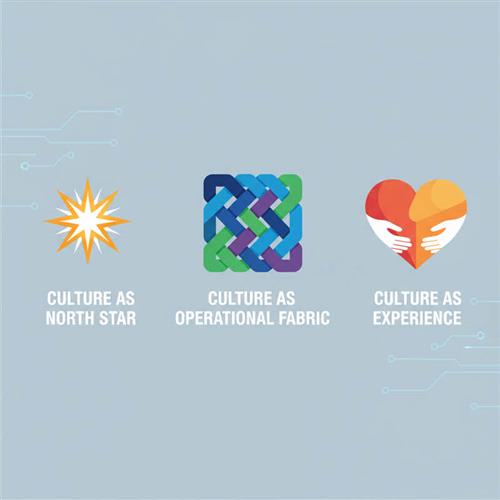



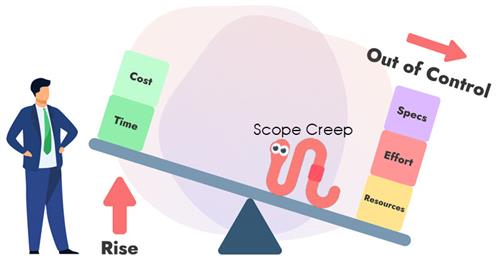






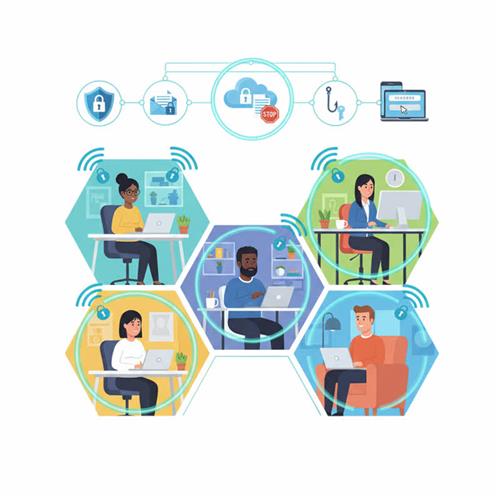
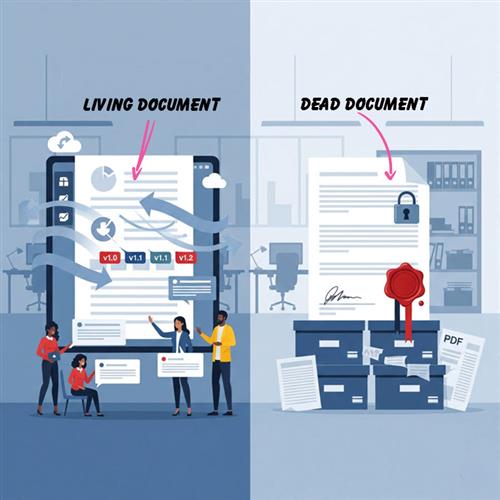



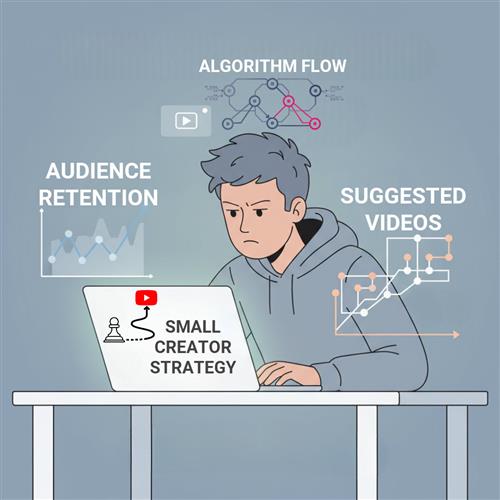










 Link copied!
Link copied!